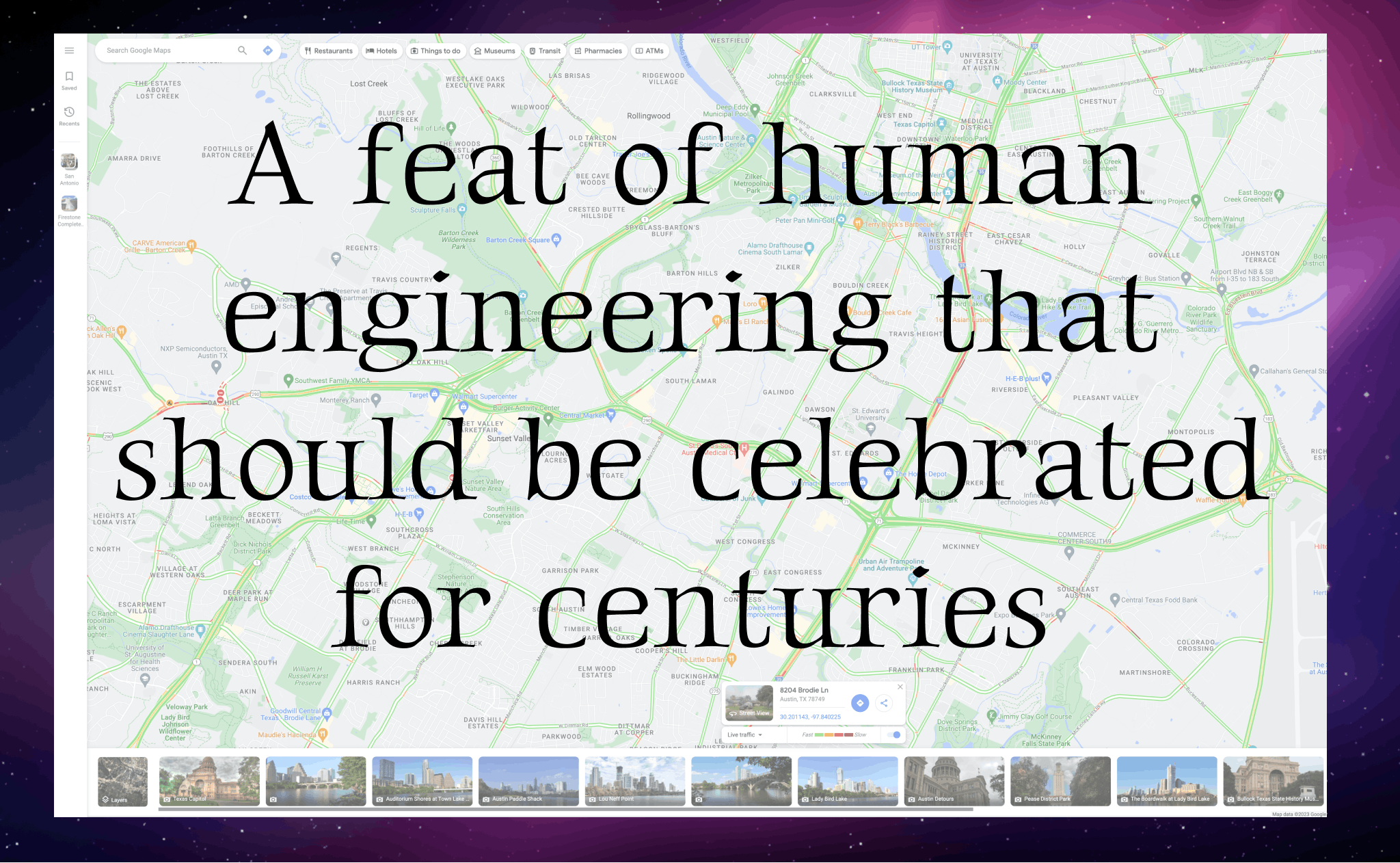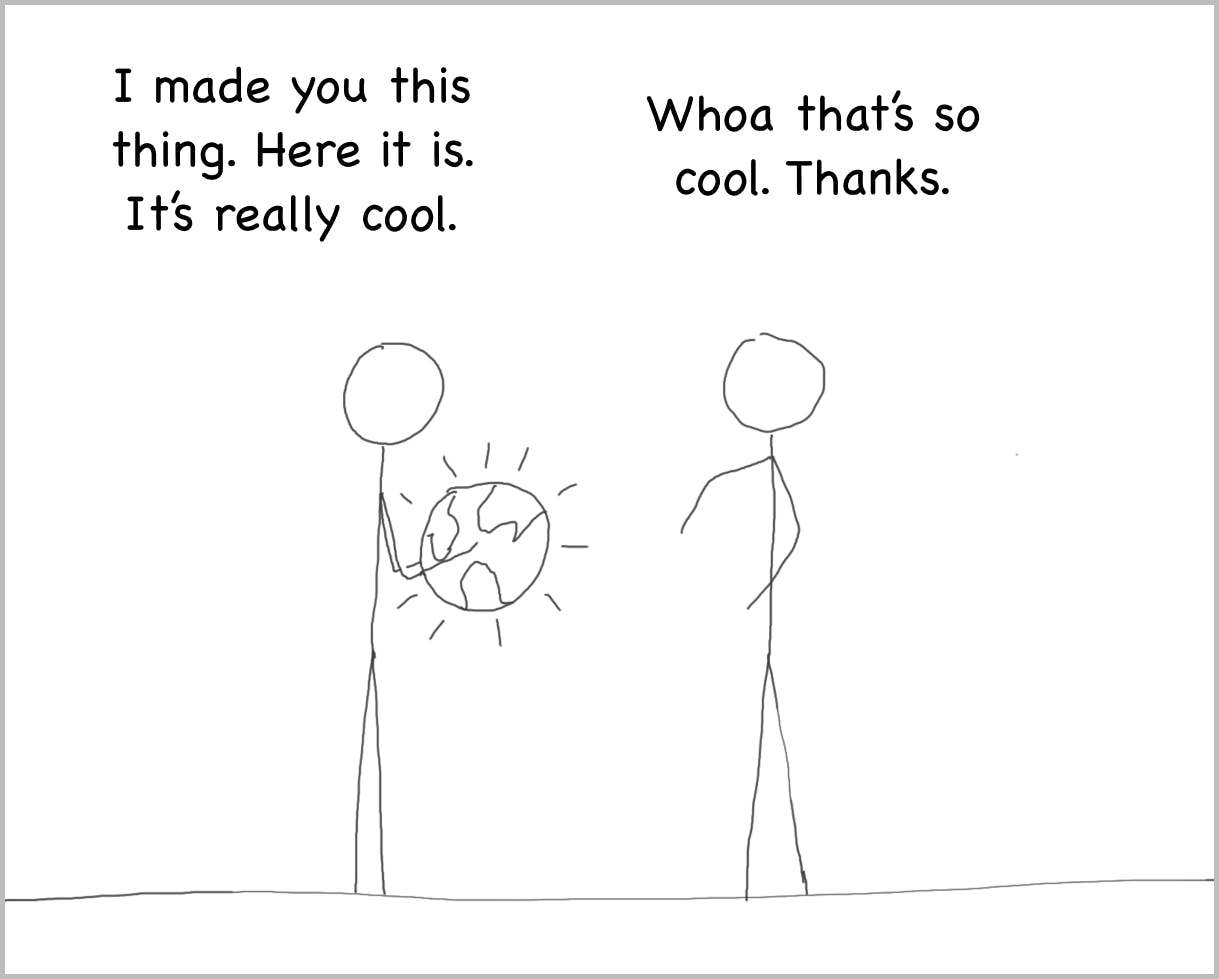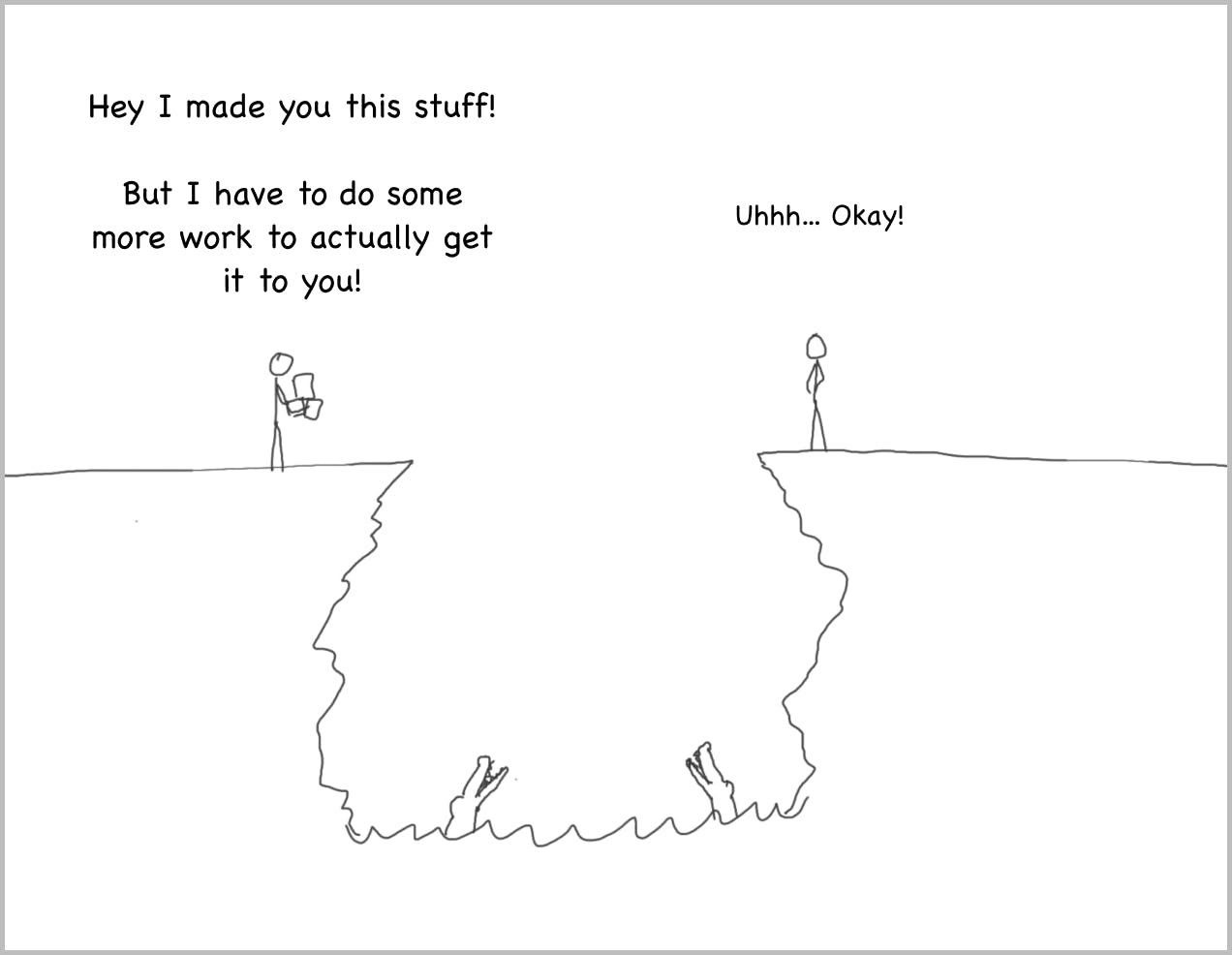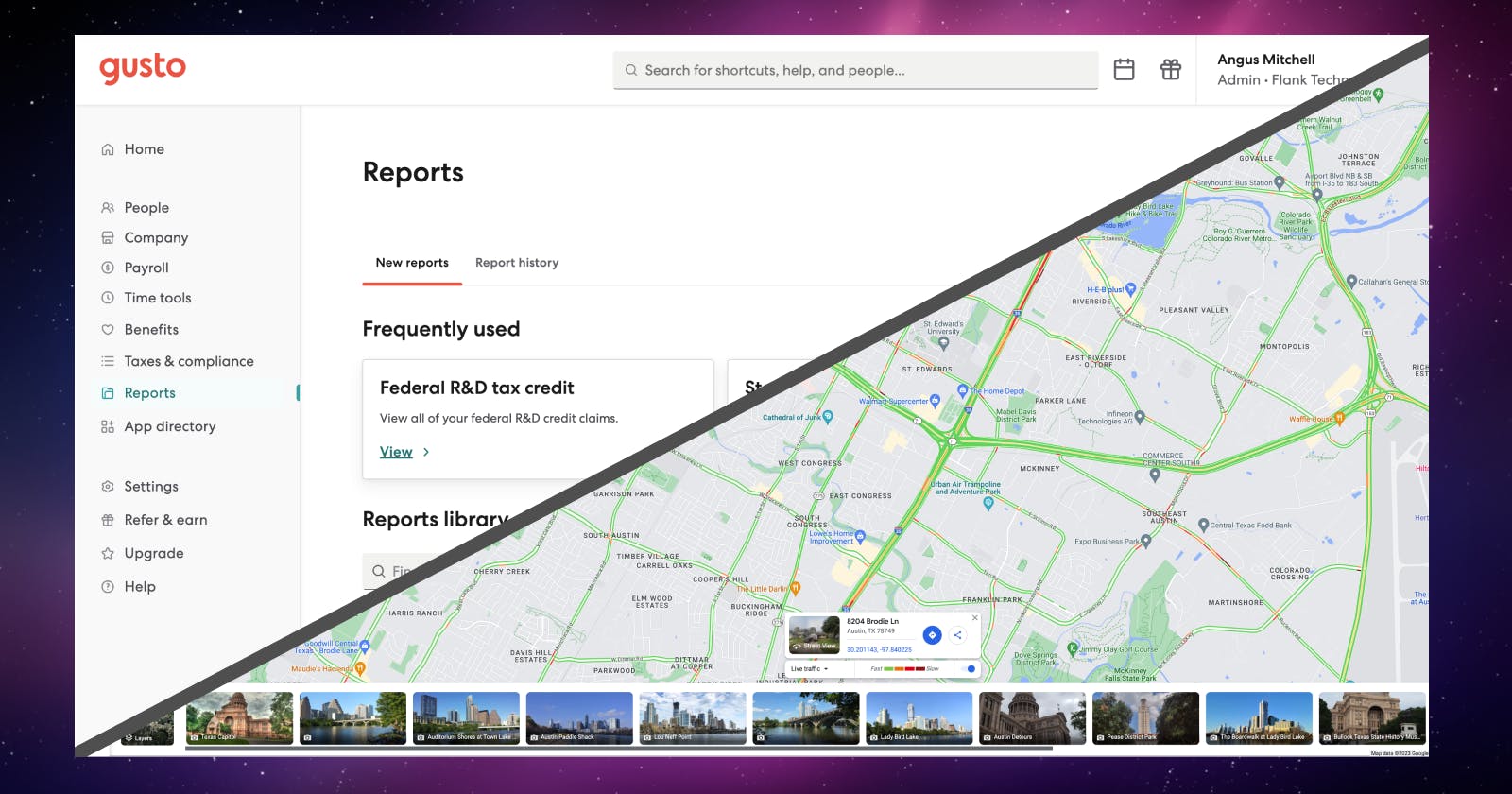There are two types of user interfaces
What makes Google Maps different than Gusto? And why is one of them like a Netflix documentary?
Google Maps versus a Payroll System
With Google Maps, the interface IS the heart and soul of the product.

With a payroll system, the real value is in running payroll, downloading reports, etc. The UI is just a means to an end.

The interface can be a production cost or a transaction cost
Two costs to make a product. First, production cost. That's the cost to make a product. Then, transaction cost. That's the cost of getting your product into the hands of a customer.
With Google Maps, the UI is a production cost.

But with a payroll system, the UI is a transaction cost.

There's a great EconTalk episode with Michael Munger where he breaks down transaction cost into the three Ts:
Triangulation - The buyer and the seller have to find each other. This takes work! Marketplaces reduce triangulation costs by providing a forum for buyers and sellers to come together.
Trust - The buyer and seller have to trust each other. And a lack of trust creates additional costs. When you buy a house, you have to pay for inspections, for example, because what if the seller is hiding something from you...?
Transfer - You have to hand the thing over somehow. This could be as simple as scanning a barcode (but remember, the scanner, the checkout person... all those things represent a cost) or it could be as complicated as installing a window into your house.
I've been using "payroll systems" as an placeholder for standard business software. And when you look at most business software -- the interface has all the elements of transaction costs. If you're selling a software product, you need to have a website to even be discoverable. Your product has to engender trust by providing clear feedback and working reliably. And you have to build input fields, buttons, and tables to transfer your work to the user.
Netflix and documentaries
Netflix slashed the transaction cost of film-going.
Before: the documentary had to be distributed to movie theatres (and then Blockbusters). You, as the buyer, had to buy a ticket or commit to renting this one movie, which requires a lot of trust. And then you had to drive to the movie theater or the store to get it! From the filmmaker's point of view, if they were going to do something niche, they had to pick a topic that had some geographic cluster. If all 100,000 of your viewers live in Buffalo, NY, sure, you could make a documentary about the Buffalo Bills and distribute it to Buffalo theaters. But if all 100,000 of your viewers are scattered around the world, no, you should not make a documentary about a random video game.
Today: NONE of those things are true anymore. And as a result, there is an entire market for documentaries that didn't exist 20 years ago.
And there's a similar opportunity in software. A lot of standard business software interfaces are... fairly undifferentiated. Buttons, input fields, tables. How much of that can be "automated"? How much of the transaction cost can be eliminated?

